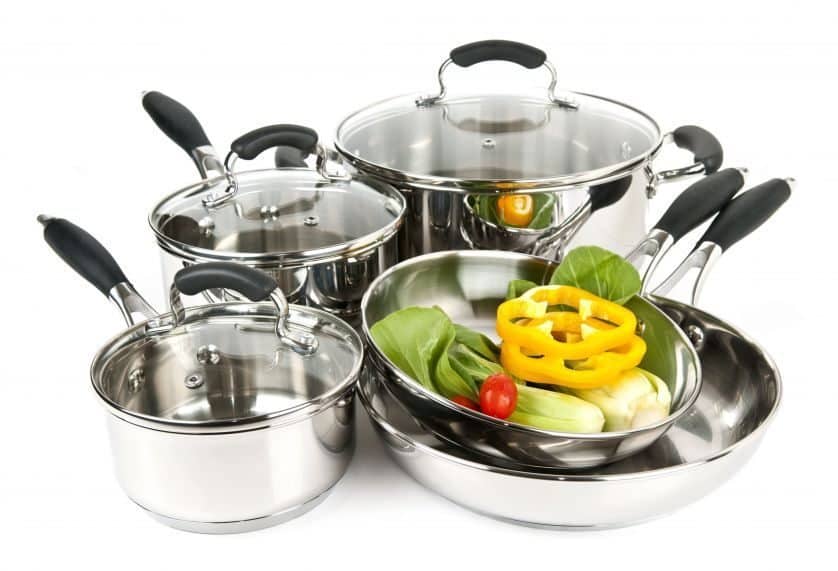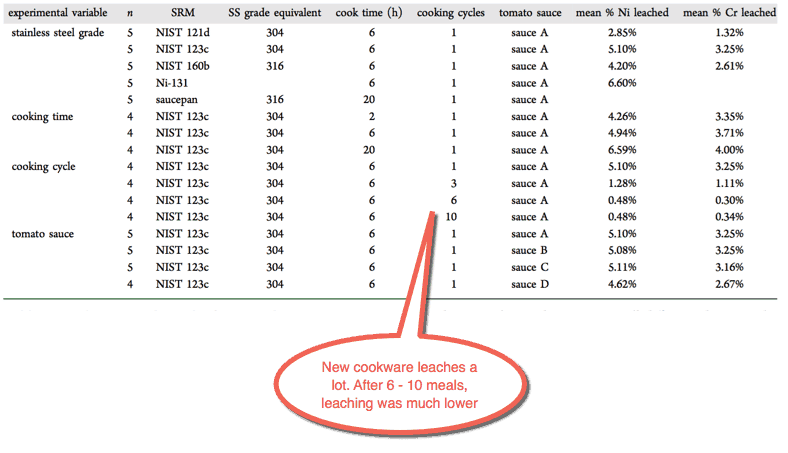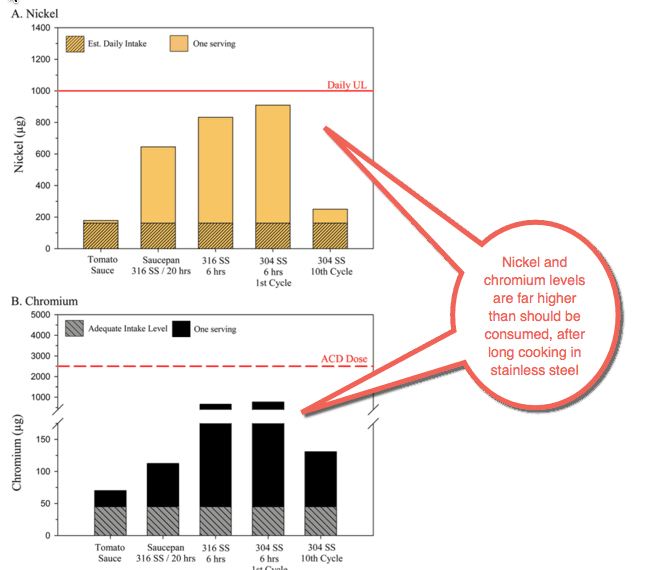
Is nickel causing your dermatitis?
Are you cooking with utensils that put toxic nickel into your food?
A single dose of nickel equal to just 67 micrograms can cause eczema or lead to dermatitis.
A bit more can cause Alzheimers symptoms.
About 10% of people get dermatitis from nickel exposure.
It’s a serious thing.
Nobody has yet found a single human body molecule that needs nickel.
So now let’s talk cookware.
Stainless steel cookware often contains high amounts of nickel and chromium.
And these leach into foods when you cook with stainless steel cookware.

Say it isn’t so, Matt!
I know right? It’s like everything we do seems dangerous.
We turn around and the first thing we know it, something like the stainless steel cookware that we all count on turns out to be dangerous, right?
Kind of yes, and kind of no.
Let’s look at the facts.
There are two metals that we have to be careful of how much we consume.
Chromium is a metal we need only in tiny, tiny quantities.
Nickel we don’t need it all.
Two types of stainless, 304 and 316 are most common.
The study says that:
SS grade 304 contains approximately 18−20% chromium and 8−12% nickel.
SS grade 316 contain approximately 16−18% chromium, and 10−14% nickel.
Now the question is how much of this leaches out into our food?
If you’re only cooking neutral foods, foods that do not have acid in them, then there is probably little or no leaching of nickel or chromium into your food.
That’s why they used tomato sauce in this study.
Tomato sauce has a lot of acids and is more likely to cause the metals to leach into your food.
New cookware leaches a lot of chromium and nickel, but once you use it for a while, the leaching is much lower.
 But even after repeated cooking, you’re still getting three to eight times as much chromium and nickel as you would in different non-stainless cookware.
But even after repeated cooking, you’re still getting three to eight times as much chromium and nickel as you would in different non-stainless cookware.

Tomato sauce cooked in a new saucepan would contain 483 μg of Ni per serving of tomato sauce, nearly one-half the tolerable upper intake level for a day. A dose of only 67 μg of nickel was associated with cutaneous reactions in 40% of nickel-sensitive participants.
And for chromium, which remember, we NEED in small amounts:
Tomato sauce cooked in the new saucepan contained 67.5 μg of chromium per serving.
Tomato sauce cooked with 316 stainless steel, contained the largest amount measured, 890 micrograms of chromium per serving after 20 hours of cooking, and 724 micrograms after 6 h.
At the tenth cooking cycle, one serving of tomato still made significant additions to total daily chromium intakes, with 85.8 micrograms per serving.
So here’s what to do now.
I would avoid making any kind of acidic sauces in stainless steel cookware.
I favor cookware that uses a titanium ceramic coating.
Or, you can use even copper cookware if you can afford it.
Copper is great because the copper is dietarily necessary, and the amount of copper that you receive from cooking even tomato sauce in a copper pot is physiologically safe.
The problem is only when cooking acidic foods.
If you’re cooking a steak or you’re cooking a chop, or you’re cooking regular vegetables that tend to be a little alkaline, such as, say, kale or broccoli or cabbage, then you have very little to worry about if you’re using stainless steel.
You can heat up pasta and cook it in a stainless steel pot with no fear.
Pre-treat your stainless steel before using it.
You can get the cookware ready by cooking a weak acid in it and throwing it away, repeatedly.
Consider putting some vinegar in the stainless steel pan, and cooking it for a while.
Throw the vinegar away, and repeat.
After 5 to 10 cycles, the pan will probably be leaching out only a small amount of chromium and nickel compared to when it was new.
However, if you’re cooking something acidic, then I would not cook it in stainless steel at all.
Is there a safe stainless steel?
Not for cooking acidic foods.
I would use something else for sure.
This is what I like to cook with:
“Unlike other ceramic cookware brands, the Ozeri pan utilizes GREBLON ceramic – an ultra-safe ceramic coating from Germany which is 100% PTFE, PFOA and APEO free (no heavy metals or chemicals).”
I like Scanpan brand, but they are expensive.
If you search for ceramic pans that are free from PTFE, PFOA and no heavy metals, you should be okay.
You can continue using stainless steel cookware, but not for cooking foods containing vinegar, tomatoes, citrus, etc.
Citations
Stainless Steel Leaches Nickel and Chromium into Foods during Cooking
http://pubs.acs.org/doi/abs/10.1021/jf402400v
Click for more information on Steel and Nickel, for information on Natural Remedies.
